Shanghai's Wartime Emergency Money
 This is the story of a little known aspect of China's history and an oft neglected area of numismatics. The setting of this article is the Chinese city of Shanghai and the year is 1939. Dire things are about to happen which will drastically change the way the city goes about its business.
This is the story of a little known aspect of China's history and an oft neglected area of numismatics. The setting of this article is the Chinese city of Shanghai and the year is 1939. Dire things are about to happen which will drastically change the way the city goes about its business.
To set the stage the author takes you through the years leading up to 1937, when the Japanese invaded China prior to World War II. After abandoning the silver standard in 1935, the Chinese government set about to unify and stabilize both coins and bank notes. After working for awhile, inflation set in due to the war ultimately driving Shanghai's merchants to the use of emergency money to keep commerce flowing.
Click to download PDF here.
A Monetary History of German East Africa
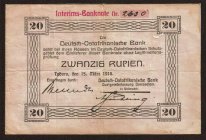 From time immemorial Europeans sought to explore and exploit foreign lands for their own benefit. The wealth of these lands, of course, flowed to the conquering power doing little for the natives who were thus "colonized". By the 1860s European attention was drawn to the continent of Africa, then in the process of discovery.
From time immemorial Europeans sought to explore and exploit foreign lands for their own benefit. The wealth of these lands, of course, flowed to the conquering power doing little for the natives who were thus "colonized". By the 1860s European attention was drawn to the continent of Africa, then in the process of discovery.
Britain, France, Germany, Italy, Belgium, Portugal and Spain all laid claim to African territory. This article explores how Germany came to colonize German East Africa, giving a detailed account of all coin issues - both governmental and private. German East Africa became a very profitable and well ordered colony, with an outstanding monetary system of its own. When World War I came along, the colony found itself isolated from the mother country, unable to rely on help from outside quarters. Relying upon national pride and a great deal of ingenuity, the Germans were able to resist the British invasion until the homeland capitulated in 1918.
Of particular interest are the German East African bank notes which offer an infinite variety of issues which illustrate the will and resolve of the German and native Askaris to win the war and keep their colony intact.
Click to download PDF here.
The Significance of Stamps Used on Bank Notes
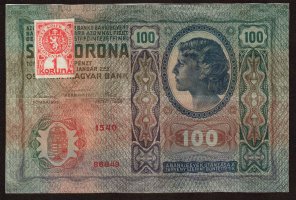 Every collector, sooner or later, runs into a bank note or two with adhesive stamps affixed to them. This article, originally written by Dr. Arnold Keller, the dean of paper money collectors, explores the various reasons governments altered the original use of bank notes by affixing stamps thereto. Some stamps were attached to merely authenticate the value of the note itself after a change in government, other uses had tax implications, while still other applications were efforts to alter the economy of a region or whole country. Many of these schemes were ingenious beyond belief, and many of them actually worked!
Every collector, sooner or later, runs into a bank note or two with adhesive stamps affixed to them. This article, originally written by Dr. Arnold Keller, the dean of paper money collectors, explores the various reasons governments altered the original use of bank notes by affixing stamps thereto. Some stamps were attached to merely authenticate the value of the note itself after a change in government, other uses had tax implications, while still other applications were efforts to alter the economy of a region or whole country. Many of these schemes were ingenious beyond belief, and many of them actually worked!
All examples of stamps found on bank notes which are known to the author are enumerated in this article. Undoubtedly there are other examples. Fellow collectors who know of other examples are invited to share their knowledge with us.
Click to download PDF here.
German Railroad Notes of the 1923 Hyperinflation
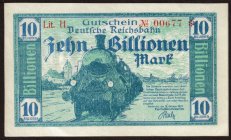 Germany offers many diverse collecting opportunities for coin and paper money enthusiasts. Among these, its varied paper money issues contain numerous areas of specialization for the collector. One such area comprises the banknotes of the German national railroad (the Deutsche Reichsbahn), and its regional offices (the various Reichsbahndirektions). These notes were issued, under law, as an emergency expedient at the height of the post World War I inflation. For those who have a passion for trains and railroading, these notes hold a special interest.
Germany offers many diverse collecting opportunities for coin and paper money enthusiasts. Among these, its varied paper money issues contain numerous areas of specialization for the collector. One such area comprises the banknotes of the German national railroad (the Deutsche Reichsbahn), and its regional offices (the various Reichsbahndirektions). These notes were issued, under law, as an emergency expedient at the height of the post World War I inflation. For those who have a passion for trains and railroading, these notes hold a special interest.
Click to download PDF here.
Siege Notes - Windows to the Past - Part I
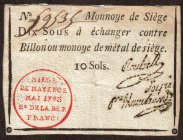 Siege warfare has been practiced by invading armies since time immemorial. As a form of warfare it attained its highest degree of development in Europe from the late 1500s until the introduction of more powerful weapons made the siege of towns and cities unnecessary. Throughout the years, a by-product of this type warfare was the production of "siege notes", paper money of necessity, to be used to sustain commerce for those under siege.
Siege warfare has been practiced by invading armies since time immemorial. As a form of warfare it attained its highest degree of development in Europe from the late 1500s until the introduction of more powerful weapons made the siege of towns and cities unnecessary. Throughout the years, a by-product of this type warfare was the production of "siege notes", paper money of necessity, to be used to sustain commerce for those under siege.
Part I discusses siege techniques and the sieges of Leyden, Lyon, Colberg, Mayence, Mantova, Erfurt, Zara, Palmanova and Osoppo, all of which issued siege notes during their defense.
Click to download PDF here.
Siege Notes - Windows to the Past - Part II
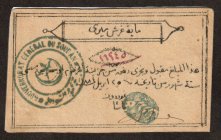 Part II discusses the sieges of Khartoum in Africa, famous for the defeat of the British forces under General Gordon; Koffyfontein, O'okiep and Mafeking during the Boer War and finally the siege of the Ottomans in their mountain fortress at Scutari in modern day Albania.
Part II discusses the sieges of Khartoum in Africa, famous for the defeat of the British forces under General Gordon; Koffyfontein, O'okiep and Mafeking during the Boer War and finally the siege of the Ottomans in their mountain fortress at Scutari in modern day Albania.
Click to download PDF here.